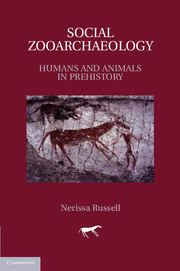Book contents
- Frontmatter
- Contents
- List of tables
- Preface
- 1 Beyond protein and calories
- 2 Animal symbols
- 3 Animals in ritual
- 4 Hunting and humanity
- 5 Extinctions
- 6 Domestication as a human–animal relationship
- 7 Pets and other human–animal relationships
- 8 Animal wealth
- 9 Meat beyond diet
- 10 Studying human–animal relations
- References
- Index
8 - Animal wealth
Published online by Cambridge University Press: 05 June 2012
- Frontmatter
- Contents
- List of tables
- Preface
- 1 Beyond protein and calories
- 2 Animal symbols
- 3 Animals in ritual
- 4 Hunting and humanity
- 5 Extinctions
- 6 Domestication as a human–animal relationship
- 7 Pets and other human–animal relationships
- 8 Animal wealth
- 9 Meat beyond diet
- 10 Studying human–animal relations
- References
- Index
Summary
Everywhere you look, in villages or the wilds of New Guinea, you see pigs (Sus scrofa papuensis). Alive, they clean up village garbage, work the soil of abandoned gardens and constitute a “food reserve on the hoof” (Vayda et al. 1961). They are exchanged by families or groups to acquire wives, dependents and prestige, but also to compensate for a death or to vie in peaceful gift-giving contests. Once killed, their meat becomes the ceremonial meal par excellence. Far from being a mere source of food, then, pigs are a universal, highly charged symbolic object that stands at the heart of a complex web of social relations. (Lemonnier 1993:126)
The circumstances of zooarchaeology, in which we study the remains of dead animals, indeed most often the remains of animals that have been eaten, tend to blind us to the value of living animals (Bogucki 1993:492). We see animals as only protein and calories, whereas in some cases their meat may have been their least important contribution to human society. In many ethnographically and historically known societies, domestic animals have functioned as wealth, and sometimes as the principal form of wealth. Pastoral societies are built around this animal wealth, and relationships are expressed in the medium of animals. Animal wealth often plays an important role in agricultural societies as well.
Animal wealth has played a large role in archaeological interpretation where ethnohistorical evidence attests to its importance, as in southern Africa. Elsewhere, it is only beginning to figure into archaeological models, which for the most part treat animals only as packages of meat. This approach reflects a larger tendency in archaeology to conflate “economy” with “subsistence” (Bogucki 1993:493). In this chapter I argue that the value of live animals as wealth must be considered anywhere there are domestic animals. Animal wealth may have been of crucial importance in the spread of agriculture and the emergence of inequality. Nowhere is it more critical to put flesh on the bones.
- Type
- Chapter
- Information
- Social ZooarchaeologyHumans and Animals in Prehistory, pp. 297 - 357Publisher: Cambridge University PressPrint publication year: 2011



